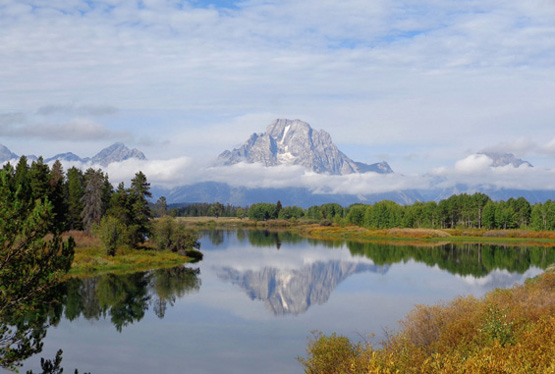Neither of us has ever been to this historic estate owned by our
country's first president, George Washington. We figured we were long
overdue -- we were right!It's another one of those American
treasures it's good to finally see in person.
We had a good time touring the estate earlier this week. I was
a little surprised how many people were there on a weekday but it wasn't
as crowded as the holiday weekend would have been.
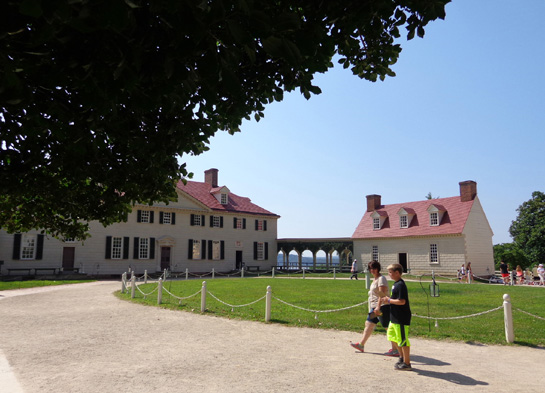
Unfortunately, Mount Vernon Estate is not free like so many of the national treasures
in D.C. but we think it's worth the cost, especially if you spend most
of the day. There's certainly plenty to see and do. We paid the senior
rate of $17 each for tickets to tour the mansion. The fee includes just
about everything on the grounds.
This entry shows some photos of Washington's house, outbuildings,
gardens, fields, and tomb, plus replicas of his grist mill and
distillery. You can read so much information and view so many professional
photos, including virtual tours, on the website link above that I'll be brief
with explanations here and mostly just give our impressions.
I've also included scenes from the paved multi-use path that runs
from the town of Alexandria, VA to Mount Vernon along the wide Potomac River.
TOURING MOUNT VERNON ESTATE
Part of the fun of getting to the estate is driving the scenic, winding
George Washington Memorial Parkway about eight miles from Alexandria to
Mount Vernon. It's a beautiful linear green space that follows the
Potomac River.
Or you can ride a bike there on the scenic multi-use trail mentioned
above:
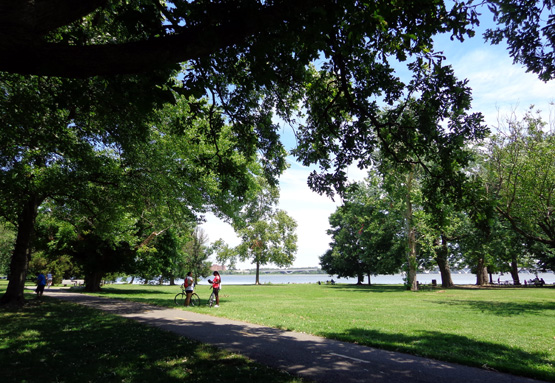
We went to the orientation building first, bought our tickets, and
watched a 25-minute film about Washington's war career and what can be
seen on the grounds of the estate.
The plantation was about 2,000 acres along the Potomac when Washington
first inherited it. He increased its size to 8,000 acres by the time of
his death in 1799 at age 67. I'm not sure how much is preserved now but
it's a large area to cover on foot.
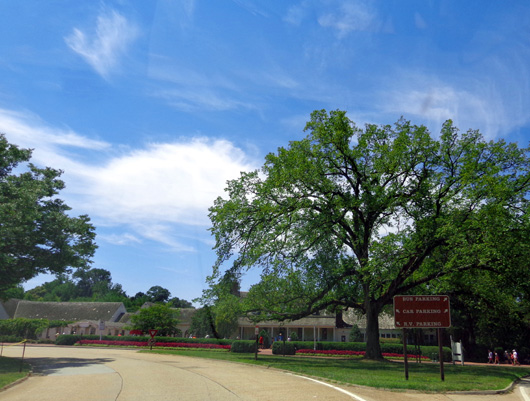
Approaching the visitor center
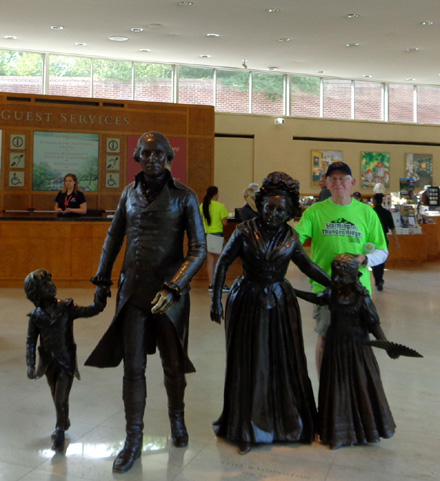
Jim hams it up with the statues in the visitor
center.
After the movie we had about 30 minutes to kill before our mansion tour
began. We walked through the nearby upper garden area . . .
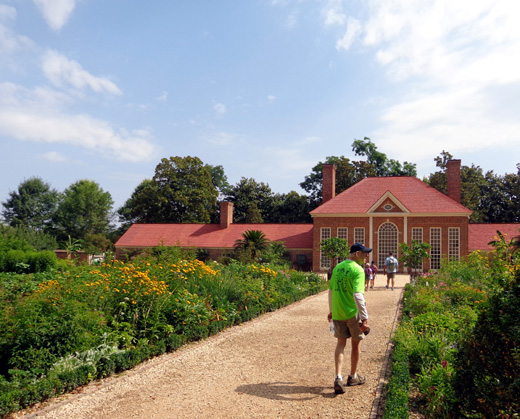
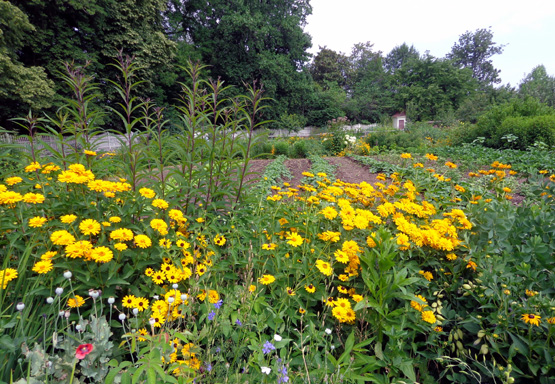
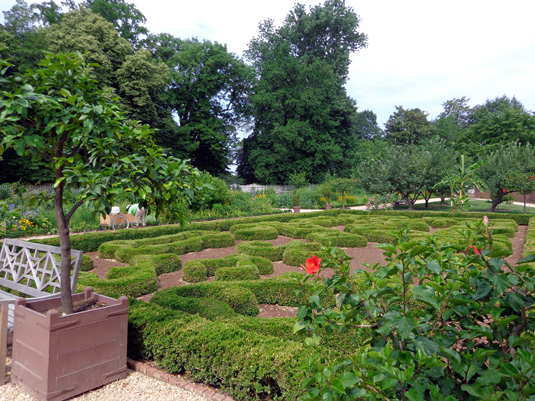
. . . and looked at the recreated slave quarters,
then stood in line about 10 minutes before our group of about 25 people
was allowed to go into the house:
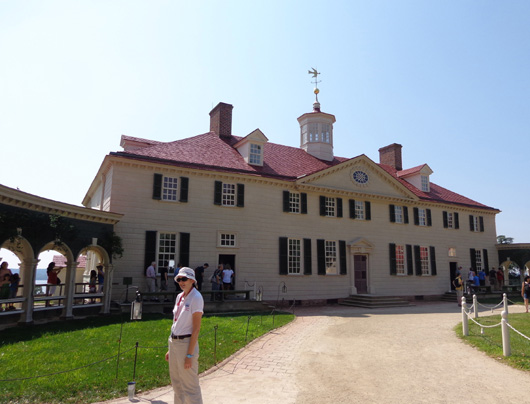
Inside we were led to about six different areas. Each had an interpreter in
period costume who explained the purpose of the rooms and pointed out
interesting architectural features and historical details.
Visitors can take photos
just about anywhere on the estate except inside the house. Part of that
is to keep the line of people flowing efficiently and part is because the decor is
"copyrighted" (i.e., they want you to purchase books that show the
rooms).
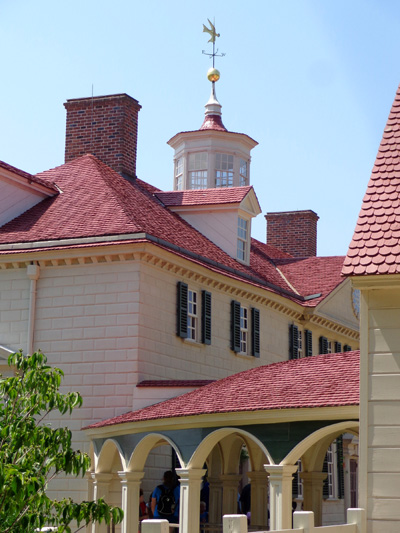
Interesting angles, arches, tiles, and cupola with
weathervane
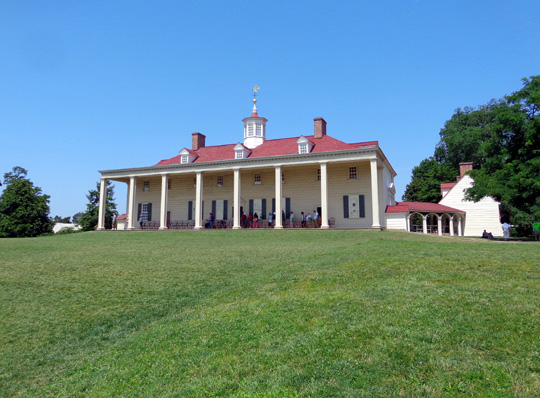
Wide porch with columns and lots of rocking chairs
on the back of the house (or is it the front???)
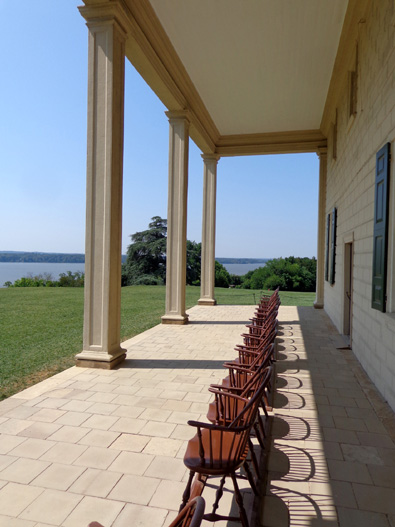
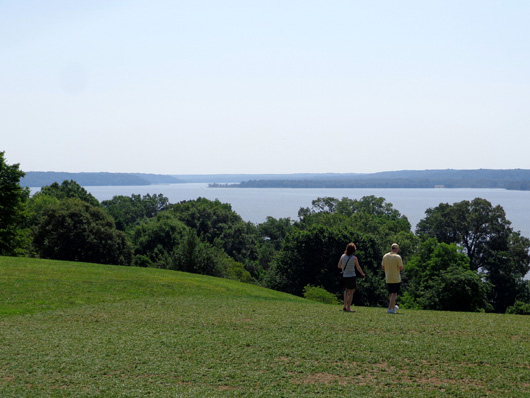
Awesome view of the Potomac from the house
The most interesting take-away for me was the number of
visitors the Washingtons put up overnight on a yearly basis -- about
800. Back then there just weren't very many places for travelers to stop each
night.
Travelers stayed an average of a week, and were fed and housed at the
expense of George and Martha.
Martha ran the house (with the help of slaves) and George ran the rest
of the business of the estate (also with the help of slaves). They had a
thriving agricultural business going for several years, including crops,
critters, and the distillery and grist mill I'll show you later.
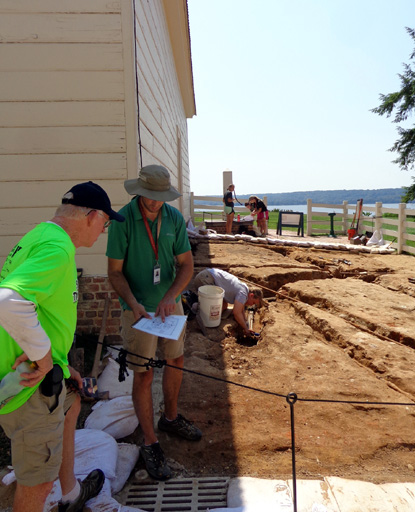
Jim talks with an archeologist; they're still excavating parts of the
estate.

I enjoyed the outbuildings, some with interpreters -- blacksmith
shop (one of two guys demonstrating the craft is shown below), spinning house, overseer's house, salt house,
gardener's house, servants' quarters, storehouse, clerk's house, coach
house, stable, paddock, etc.
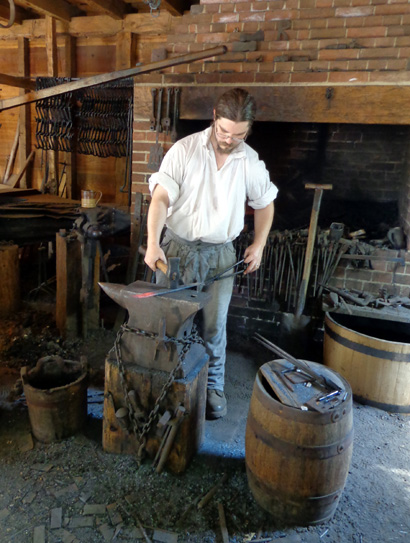
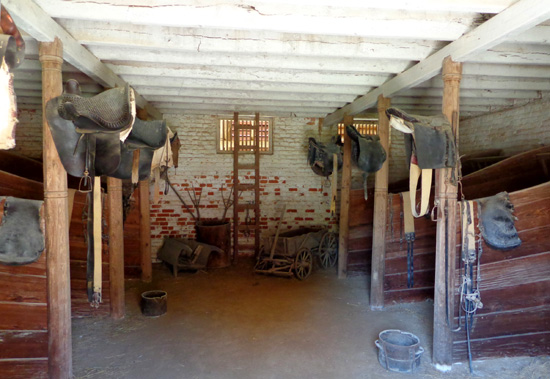
Stable
We walked through the expansive yard overlooking the river and
down to the old and newer family tomb:
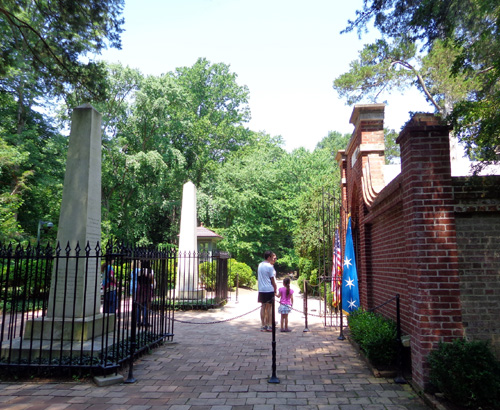
We didn't go as far as the wharf, slave memorial, pioneer farm, or
16-sided barn. We did see some crops, two sheep, and a mama pig with a bunch of
little piglets:
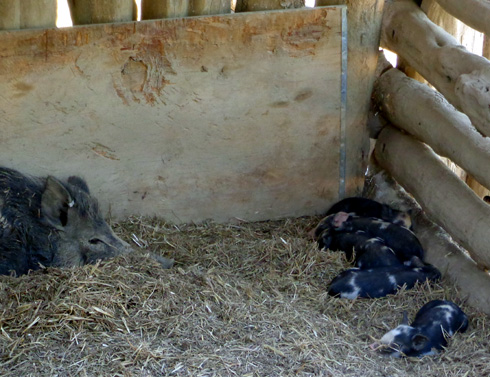
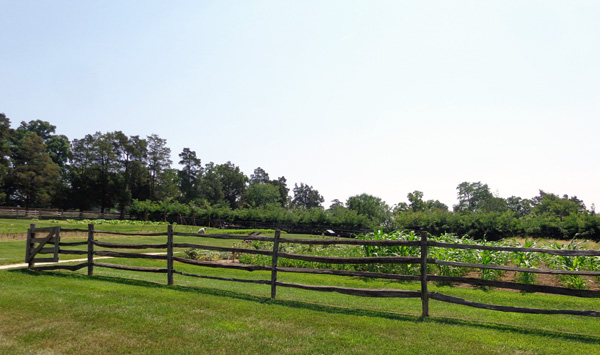
We walked back to the large building that houses the museum, auditorium,
food court, restaurant, inn, and gift shops. Jim got a sandwich to eat,
then we went back to the car to get our bikes.
MT. VERNON MULTI-USE PATH
The paved bike trail reminded me a little bit of cycling on the Coastal
Trail in Anchorage. Some of it is near the river, some on the other side
of the parkway. Some is shaded, some in the sun.
It's very scenic and interesting, with lots of curves and bridges over
ravines and wet areas. It was hillier than I expected, and more narrow.
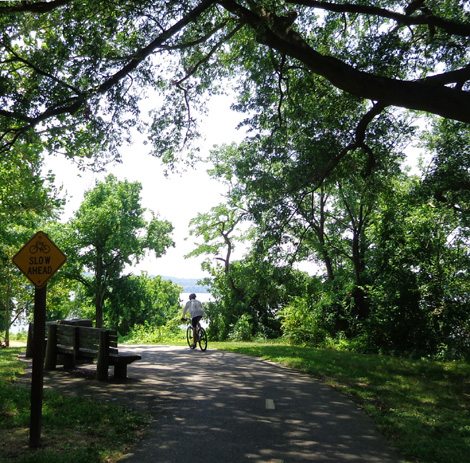

I'm not sure I'd want to walk on it with a dog or little kids -- too dangerous with all the
bikes. I'm very glad we didn't ride on the weekend. On Sunday when we
were driving on the parkway we could see a lot of people walking,
running, and cycling on the path. There were many fewer people on Monday
when we rode on it.
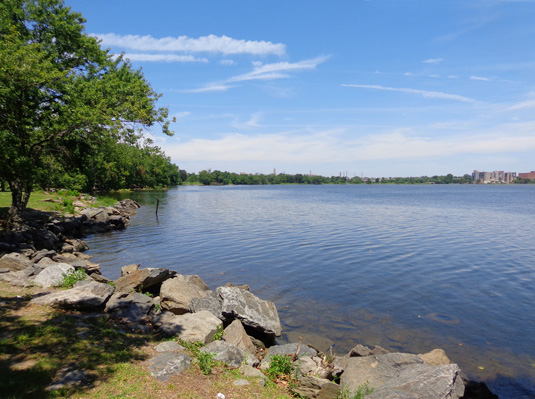
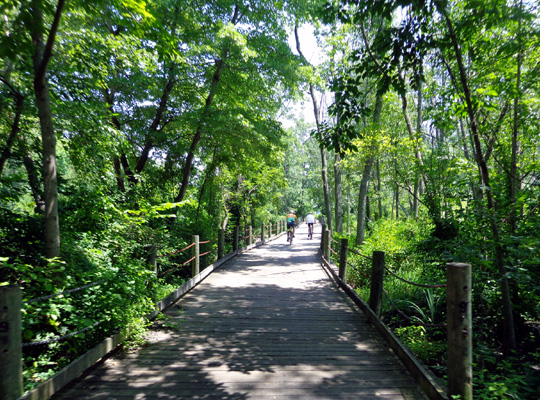
Because of the heat and the time (can't leave Casey more than about 7
hours) we turned around after five miles and rode back to the parking
area at Mount Vernon.
When we come back to D.C. in the fall to get the car we want to
ride our bikes all eight miles on the bike path (and back another eight
miles). There are parking areas a couple places farther north that are
closer to Andrews AFB.
WASHINGTON'S GRIST MILL & DISTILLERY
After our bike ride we drove to see replicas of Washington's grist mill
and distillery in a scenic setting about three miles south of the
visitor center. There was no additional charge to take a tour of both
buildings and listen to interpreters in period costume.
Both the grist mill
and distillery buildings are reconstructions of the highly successful
original operations in use on Washington's estate in the late 1790s.
We walked down to the
grist mill first:
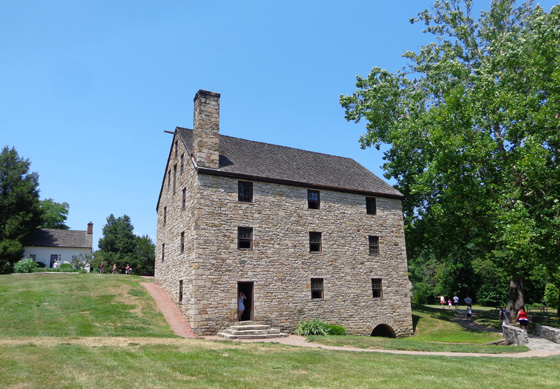

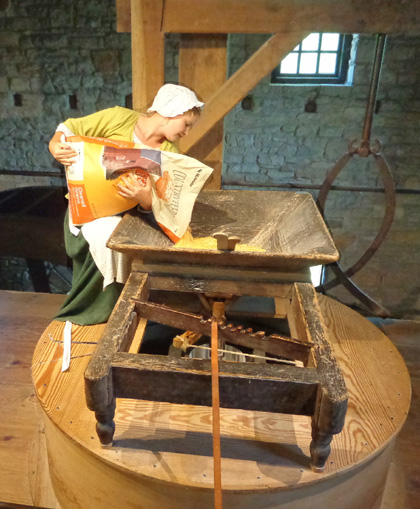
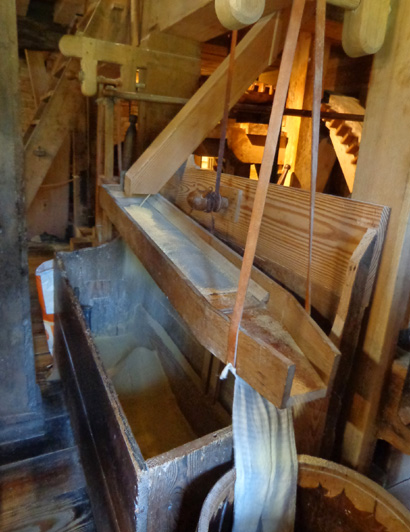
Next was a tour in the cellar of the distillery, where another young
woman showed us how the whiskey was made in the late 1790s:
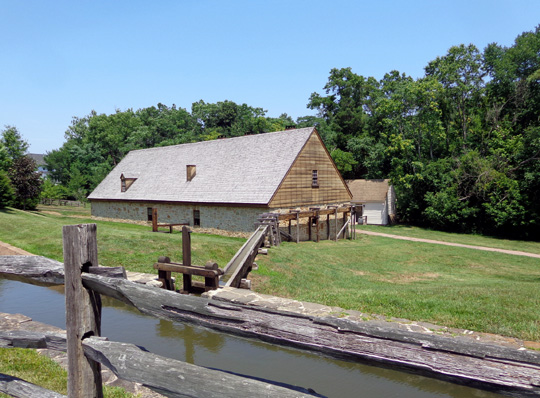
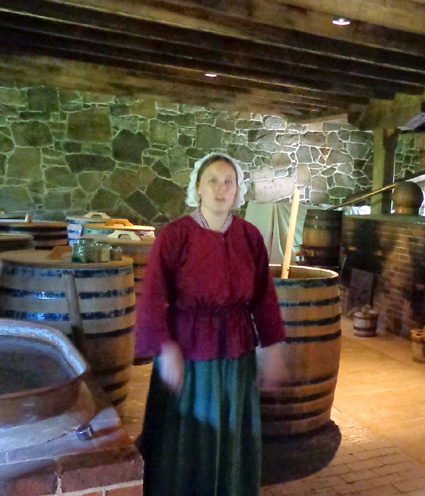
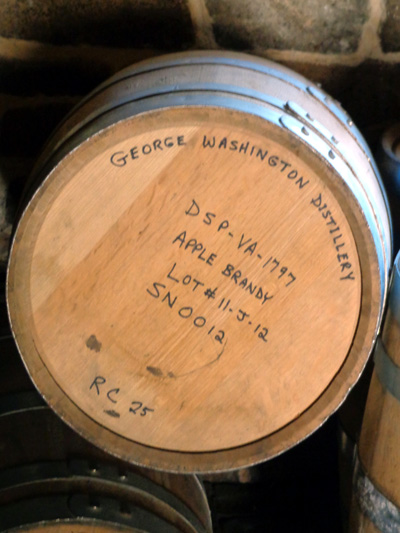
Upstairs in the distillery is a museum.
And yes, the
reconstructed distillery produces whiskey and the replica mill produces
wheat flour and corn meal -- no samples during tours, though.
Next entry: camping at Promised Land State Park in
the scenic Pocono Mountains of Pennsylvania
Happy trails,
Sue
"Runtrails & Company" - Sue Norwood, Jim O'Neil,
Cody the ultra Lab, and Casey-pup
Previous
Next
© 2014 Sue Norwood and Jim O'Neil
